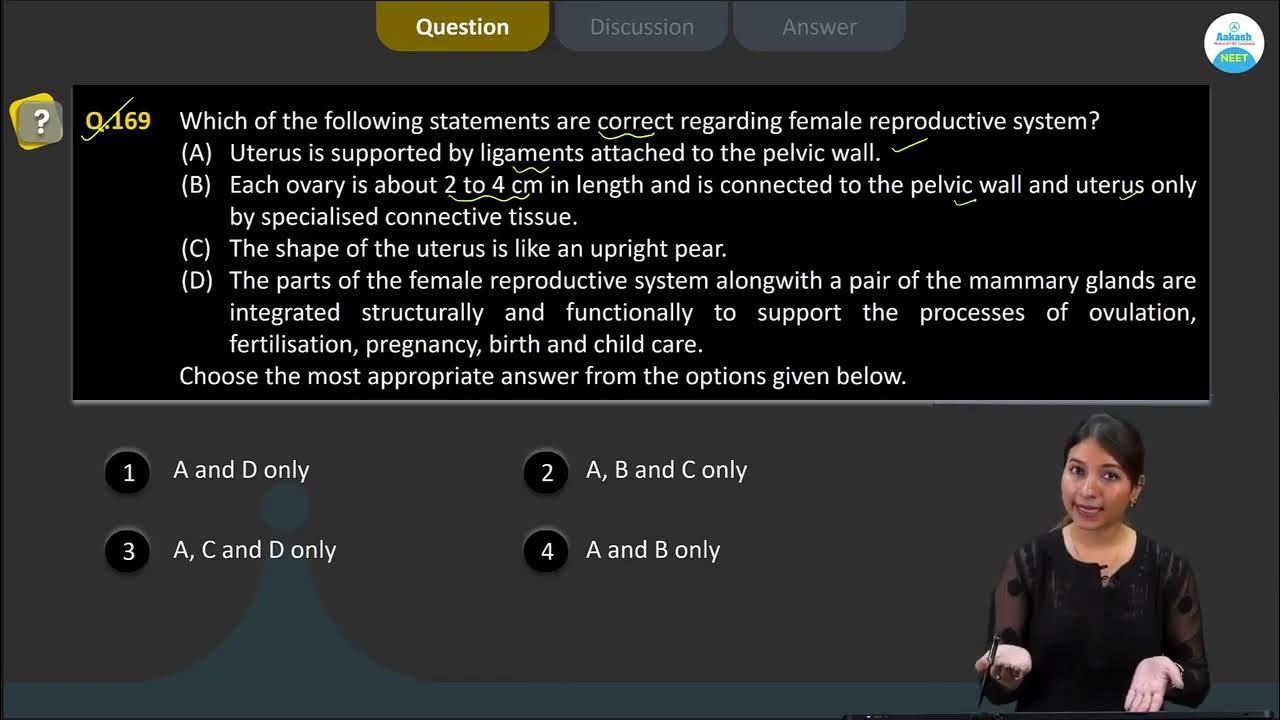Male reproduction system | Structures and Function
Summary
TLDRIn this engaging biology lesson, Miss Angler explores the male reproductive system, detailing its structures, functions, and the process of spermatogenesis. She explains the role of the testes in sperm production and testosterone secretion, highlighting the importance of temperature regulation. The video also covers the epididymis, vas deferens, and the essential glands—prostate, seminal vesicles, and Cowper's glands—that contribute to semen production. Miss Angler emphasizes the unique shared pathway of the reproductive and urinary systems in males, enhancing understanding for students preparing for tests. This informative session is designed to clarify key concepts in male reproductive biology.
Takeaways
- 😀 The male reproductive system, or urogenital system, shares the urethra with the urinary system for both urination and ejaculation.
- 👨⚕️ The testes produce sperm and testosterone, and are located in the scrotum, which regulates temperature for optimal sperm production.
- 🧬 Spermatogenesis occurs in the seminiferous tubules of the testes, transforming diploid cells into haploid sperm under testosterone influence.
- 🔄 Sperm mature in the epididymis, where they develop tails and other structures necessary for motility.
- 🚀 The vas deferens, also known as the sperm duct, transports sperm from the epididymis to the urethra during ejaculation.
- 🔬 The prostate gland produces nutrient-rich secretions that support sperm viability during their journey.
- 🍭 Seminal vesicles secrete fluids that neutralize the vaginal acidity, creating a more favorable environment for sperm survival.
- 💧 Cowper's glands (bulbourethral glands) produce a mucus secretion that assists in sperm motility through a more hospitable medium.
- 📏 The urethra serves dual functions, transporting both urine and semen, while the penis delivers semen to the vagina during reproduction.
- 🧠 Understanding the structure and function of the male reproductive system is crucial for knowledge in human biology and reproduction.
Q & A
What is the male reproductive system also known as?
-The male reproductive system is also known as the urogenital system.
What are the primary functions of the testes?
-The testes are responsible for producing sperm cells through spermatogenesis and secreting testosterone.
Why is temperature regulation important for sperm production?
-Sperm production is sensitive to temperature, requiring it to be approximately two degrees lower than internal body temperature for optimal development.
What is the role of the epididymis in the male reproductive system?
-The epididymis is where sperm mature, developing a tail and neck for mobility, and storing sperm until ejaculation.
How does the vas deferens function in the male reproductive system?
-The vas deferens is a muscular tube that transports sperm from the epididymis to the urethra, contracting with peristaltic waves during ejaculation.
What is the function of the prostate gland?
-The prostate gland produces secretions that provide nutrients for sperm, aiding their long journey during fertilization.
How do the seminal vesicles contribute to sperm health?
-Seminal vesicles produce secretions that neutralize the acidic environment of the vagina, making it more hospitable for sperm cells.
What is the Cowper's gland and its role in reproduction?
-The Cowper's gland, also known as the bulbourethral gland, produces an alkaline mucus that helps to lubricate and facilitate the movement of sperm.
What are the two functions of the urethra?
-The urethra has dual functions: it serves as a passage for urine and also transports semen during ejaculation.
What is semen composed of?
-Semen is composed of sperm cells and various secretions from the prostate gland, seminal vesicles, and Cowper's gland.
Outlines

此内容仅限付费用户访问。 请升级后访问。
立即升级Mindmap

此内容仅限付费用户访问。 请升级后访问。
立即升级Keywords

此内容仅限付费用户访问。 请升级后访问。
立即升级Highlights

此内容仅限付费用户访问。 请升级后访问。
立即升级Transcripts

此内容仅限付费用户访问。 请升级后访问。
立即升级5.0 / 5 (0 votes)






